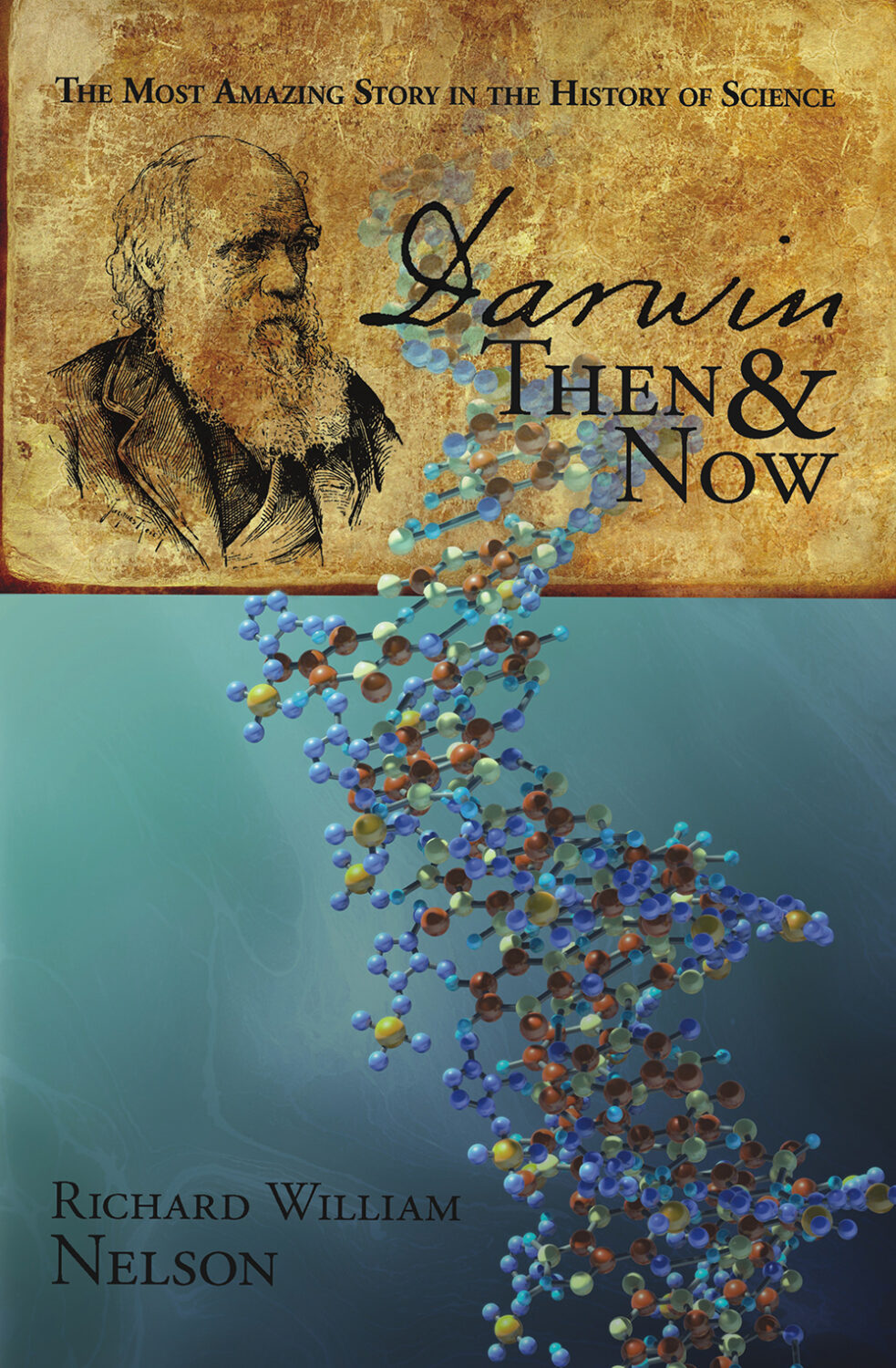by Richard William Nelson | Apr 30, 2013
 “Natural selection” is the name Charles Darwin used to describe the mechanism driving evolution and the origin of species. The title of his book was The Origin of Species by Means of Natural Selection. Natural selection was the “means” of evolution, the fundamental tenet of Darwin’s theory.
“Natural selection” is the name Charles Darwin used to describe the mechanism driving evolution and the origin of species. The title of his book was The Origin of Species by Means of Natural Selection. Natural selection was the “means” of evolution, the fundamental tenet of Darwin’s theory.
Natural selection emerged as the cornerstone law of evolution following the publication of The Origin in 1859. “I do believe,” Darwin argued, “natural selection acts slowly by accumulating slight, successive, favorable variations.”
Natural selection, the tenet of Darwin’s theory, when viewed through the lens of twenty-first-century technologies, increasingly faces scientific challenges.
Continue Reading
by Richard William Nelson | Apr 23, 2013
 The long-awaited analysis of one of the most influential lobed-finned fish in evolutionary history, the coelacanth genome (pictured left), was published last week by Chris T. Amemiya (pictured right below) of the University of Washington and Jessica Alföldi from MIT and Harvard in the prestigious journal Nature.
The long-awaited analysis of one of the most influential lobed-finned fish in evolutionary history, the coelacanth genome (pictured left), was published last week by Chris T. Amemiya (pictured right below) of the University of Washington and Jessica Alföldi from MIT and Harvard in the prestigious journal Nature.
The coelacanth plays a crucial and colorful role in the history of evolution.
Biologist Louis Agassiz, born in Switzerland, became a professor at Harvard University and founder of the Museum of Comparative Biology and was the first to describe and name the fish in 1839. Ironically, Agazzi became a leading critic of Charles Darwin.
Continue Reading
by Richard William Nelson | Apr 13, 2013

A research team led by Michael Blaber of Florida State University College of Medicine recently reported a solution to a problem with the “protein-first,” also known as the protein self-assembly origin of life theory. The issue involves protein folding.
Biologically active proteins are only functional when folded into specific molecular structures.
Proteins’ ability to fold into specific structures is essential to performing cellular functions. While the team’s approach aligns with Charles Darwin’s theory, the protein self-assembly origin of life competes with the popular “RNA-first” origin of life theory.
Continue Reading
by Richard William Nelson | Feb 19, 2013
 “The origin of life on Earth is a scientific problem,” according to WIKIPEDIA, “which is not yet solved. There are many ideas but few clear facts.”
“The origin of life on Earth is a scientific problem,” according to WIKIPEDIA, “which is not yet solved. There are many ideas but few clear facts.”
In 2013, Princeton University hosted an international Origin of Life conference to address this issue.
In the nineteenth century, the “spontaneous generation” theory had long been the prevailing natural explanation for the origin of life, dating back to Greek philosophy. Even Charles Darwin, centuries later, endorsed the theory in The Origin of Species (1859).
Continue Reading
by Richard William Nelson | Feb 4, 2013
 Paleontologist Pascal Godefroit of the Royal Belgian Institute of Natural Sciences in Belgium published a paper in Nature in January, challenging the current understanding of “the first bird.” In Liaoning Province of north-east China, Godefroit collaborated with a research team from the Jilin University Geological Museum, China, and found fossil evidence challenging the Archaeopteryx as “the first bird.” Archaeopteryx means the “ancient wing.”
Paleontologist Pascal Godefroit of the Royal Belgian Institute of Natural Sciences in Belgium published a paper in Nature in January, challenging the current understanding of “the first bird.” In Liaoning Province of north-east China, Godefroit collaborated with a research team from the Jilin University Geological Museum, China, and found fossil evidence challenging the Archaeopteryx as “the first bird.” Archaeopteryx means the “ancient wing.”
Nature published their paper entitled “Reduced plumage and flight ability of a new Jurassic paravian theropod from China,” Godefroit stated –
“These specimens have challenged the pivotal position of Archaeopteryx in bird phylogeny.”
Continue Reading
by Richard William Nelson | Jan 24, 2013
 Origin of life researchers collected “new insights” from a new paper entitled “The origin of membrane biogenetics,” published in the December issue of the journal Cell. The media elevated the hype into an origin-of-life sea saga spectacle.
Origin of life researchers collected “new insights” from a new paper entitled “The origin of membrane biogenetics,” published in the December issue of the journal Cell. The media elevated the hype into an origin-of-life sea saga spectacle.
The journal Nature covered the paper in an article entitled “How life emerged from deep-sea rocks” by Ed Yong. The subtitle. “The origin of ion-pumping proteins could explain how life began in and escaped from undersea thermal vents,” seemed to seal the deal.
Continue Reading
by Richard William Nelson | Dec 20, 2012
 Charles Darwin‘s story of how the giraffe got its long neck is one of the most popular and widely-told stories in the history of evolution. At the center of the giraffe evolution story is the African okapi (pictured left).
Charles Darwin‘s story of how the giraffe got its long neck is one of the most popular and widely-told stories in the history of evolution. At the center of the giraffe evolution story is the African okapi (pictured left).
The story begins with Darwin speculating on a transitional link. In The Origin of Species, Darwin wrote –
“It seems to me almost certain that an ordinary hoofed quadruped might be converted into a giraffe.”
Continue Reading
by Richard William Nelson | Dec 4, 2012
 Africa’s majestically bizarre leaf-eating giraffe once served as an elite status symbol. Even from early civilizations, images of the giraffe are etched and sketched into the rock all over Africa. Puzzling over how the giraffe got its long neck and gentle behavior, the giraffe was the prize of Kings.
Africa’s majestically bizarre leaf-eating giraffe once served as an elite status symbol. Even from early civilizations, images of the giraffe are etched and sketched into the rock all over Africa. Puzzling over how the giraffe got its long neck and gentle behavior, the giraffe was the prize of Kings.
In 46 BC, Julius Caesar brought the first giraffe into Europe. Seeming to blend the characteristics of the camel and leopard, the Romans named the giraffe a “cameleopard.” Caesar presented giraffes to lions in Roman arenas to shred and shock audiences.
Continue Reading
by Richard William Nelson | Nov 20, 2012
 Life originated in “a warm little pond,” Charles Darwin wrote to Joseph J. Hooker, the founder of geographical botany within Darwin’s circle of colleagues. How, where, and when the first species got started, however, completely escaped Darwin.
Life originated in “a warm little pond,” Charles Darwin wrote to Joseph J. Hooker, the founder of geographical botany within Darwin’s circle of colleagues. How, where, and when the first species got started, however, completely escaped Darwin.
In contemplating the origin of life dilemma, Darwin noted in his autobiography –
“The mystery of the beginning of all things is insoluble by us, and I, for one, must be content to remain an agnostic.”
Continue Reading
by Richard William Nelson | Nov 6, 2012
 Scientists last week proposed new evolutionary relationships among all 9,993 of the world’s known living bird species. In a letter published in the prestigious Nature journal, scientists reported on the use of DNA-sequence data to create a radiating phylogenetic tree, a revolutionary new bird tree of life (pictured left).
Scientists last week proposed new evolutionary relationships among all 9,993 of the world’s known living bird species. In a letter published in the prestigious Nature journal, scientists reported on the use of DNA-sequence data to create a radiating phylogenetic tree, a revolutionary new bird tree of life (pictured left).
Walter Jetz (pictured right), an evolutionary biologist at Yale University in New Haven, Connecticut, was the leading author of the letter entitled “The global diversity of birds in space and time.” In an interview with science writer Virginia Gewin for Nature News, Jetz explains –
“This is the first dated tree of life for a class of species this size to be put on a global map.”
Continue Reading
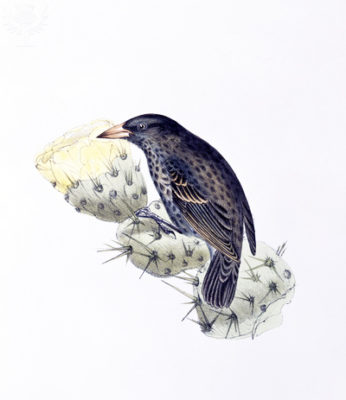 “Natural selection” is the name Charles Darwin used to describe the mechanism driving evolution and the origin of species. The title of his book was The Origin of Species by Means of Natural Selection. Natural selection was the “means” of evolution, the fundamental tenet of Darwin’s theory.
“Natural selection” is the name Charles Darwin used to describe the mechanism driving evolution and the origin of species. The title of his book was The Origin of Species by Means of Natural Selection. Natural selection was the “means” of evolution, the fundamental tenet of Darwin’s theory.
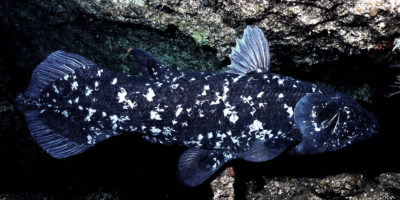 The long-awaited analysis of one of the most influential lobed-finned fish in evolutionary history, the coelacanth genome (pictured left), was published last week by
The long-awaited analysis of one of the most influential lobed-finned fish in evolutionary history, the coelacanth genome (pictured left), was published last week by 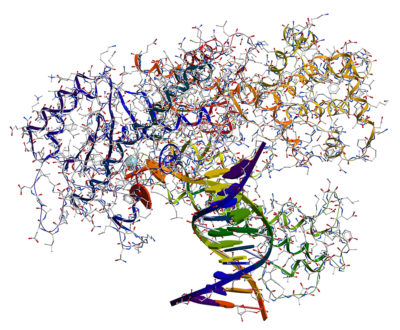
 “The origin of life on
“The origin of life on 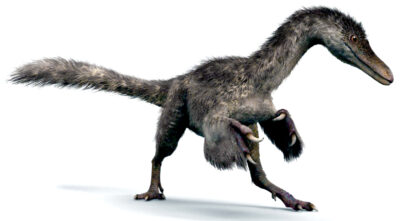 Paleontologist
Paleontologist  Origin of life researchers collected “new insights” from a new paper entitled “
Origin of life researchers collected “new insights” from a new paper entitled “ Charles Darwin
Charles Darwin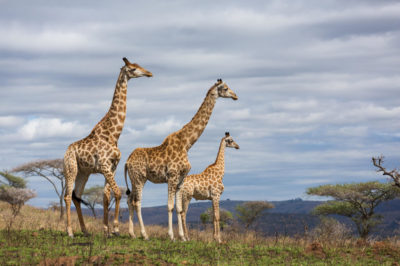 Africa’s majestically bizarre leaf-eating giraffe once served as an elite status symbol. Even from early civilizations, images of the giraffe are etched and sketched into the rock all over Africa. Puzzling over how the giraffe got its long neck and gentle behavior, the giraffe was the prize of Kings.
Africa’s majestically bizarre leaf-eating giraffe once served as an elite status symbol. Even from early civilizations, images of the giraffe are etched and sketched into the rock all over Africa. Puzzling over how the giraffe got its long neck and gentle behavior, the giraffe was the prize of Kings. Life originated in “a warm little pond,”
Life originated in “a warm little pond,” 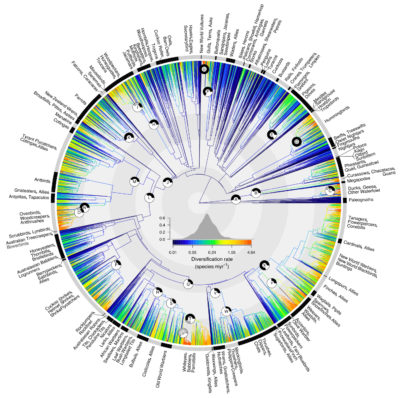 Scientists last week proposed new evolutionary relationships among all 9,993 of the world’s known living bird
Scientists last week proposed new evolutionary relationships among all 9,993 of the world’s known living bird 